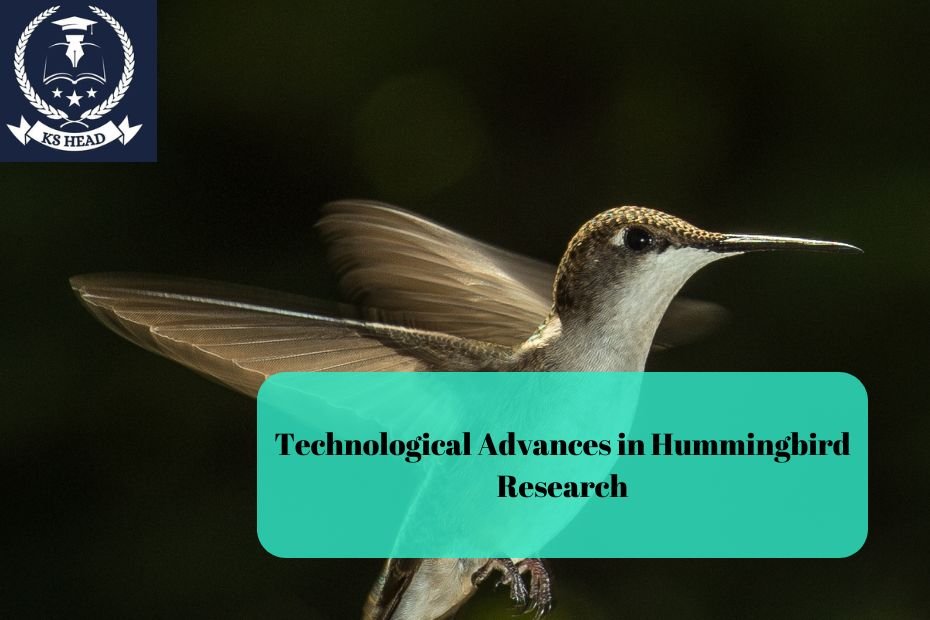Hummingbirds, with their vibrant colors and remarkable flying abilities, have captivated researchers and nature enthusiasts alike. As these small but powerful creatures continue to inspire curiosity, advancements in technology have revolutionized how scientists study their behavior, migration patterns, and ecology. This article explores the latest technological developments in hummingbird research, highlighting their impact on our understanding of these fascinating birds.
1. High-Speed Cameras and Motion Analysis
Overview
High-speed cameras have become essential tools in studying hummingbird flight dynamics and behavior. Traditional methods of observation often fell short in capturing the rapid movements of these birds. With frame rates exceeding 1,000 frames per second, high-speed cameras allow researchers to analyze their flight patterns in unprecedented detail.
Applications
- Flight Mechanics: Scientists have used high-speed cameras to study how hummingbirds hover, accelerate, and maneuver through complex environments. This research has revealed insights into their unique wing structure and muscle function.
- Behavioral Studies: Researchers can capture and analyze specific behaviors, such as feeding techniques and courtship displays. This has enhanced our understanding of social interactions and mating rituals among hummingbirds.
Case Studies
A notable study utilized high-speed cameras to observe the flight patterns of the Ruby-throated Hummingbird. Researchers discovered that these birds could change direction rapidly and hover with remarkable stability, providing insights into their energy-efficient flight mechanisms.
2. GPS Tracking and Migration Studies
Overview
GPS technology has transformed the study of hummingbird migration patterns. By equipping hummingbirds with lightweight GPS trackers, researchers can track their movements over vast distances and gain valuable insights into their migratory behavior.
Applications
- Migration Routes: GPS tracking allows scientists to map the exact routes taken by hummingbirds during migration, revealing stopover points and important feeding grounds along the way.
- Timing and Patterns: Researchers can analyze the timing of migration, helping to identify factors that influence migratory behavior, such as climate change and habitat availability.
Case Studies
The tracking of Rufous Hummingbirds has provided groundbreaking data on their migration from North America to Central America. By analyzing GPS data, researchers learned about the birds’ preferred migration routes and identified critical stopover sites that are essential for refueling during their long journeys.
3. Genetic Analysis and Population Studies
Overview
Advancements in genetic analysis techniques have significantly enhanced our understanding of hummingbird population dynamics and evolution. Techniques such as DNA sequencing allow researchers to investigate genetic diversity and relationships among different hummingbird species.
Applications
- Genetic Diversity: By studying genetic samples, scientists can assess the health and diversity of hummingbird populations, providing insights into their resilience to environmental changes.
- Phylogenetic Studies: Genetic analysis can help clarify evolutionary relationships among species, shedding light on the origins and diversification of hummingbirds.
Case Studies
A study conducted on the Anna’s Hummingbird used genetic analysis to explore the population structure of this species in response to habitat fragmentation. The findings highlighted the importance of conserving genetic diversity to ensure the long-term survival of the species.
4. Acoustic Monitoring and Sound Analysis
Overview
Acoustic monitoring has emerged as a valuable tool for studying hummingbird vocalizations and communication. By deploying sensitive microphones and sound recording devices, researchers can capture the diverse range of sounds produced by these birds.
Applications
- Vocalization Patterns: Acoustic monitoring allows scientists to analyze the vocalizations of hummingbirds in different contexts, such as courtship, territorial displays, and alarm calls.
- Habitat Preferences: Understanding how vocalizations vary across different habitats can provide insights into the ecological needs of hummingbirds and their responses to environmental changes.
Case Studies
Research on the vocalizations of the Black-chinned Hummingbird revealed distinct differences in calls based on the breeding season and environmental conditions. This study emphasized the role of vocal communication in mating and territory defense.
5. Remote Sensing and Habitat Analysis
Overview
Remote sensing technology, including satellite imagery and drone surveys, has enhanced researchers’ ability to study hummingbird habitats on a broader scale. This technology provides critical data on habitat changes and the availability of resources.
Applications
- Habitat Mapping: Remote sensing allows scientists to create detailed maps of hummingbird habitats, identifying key areas for conservation efforts and resource management.
- Monitoring Environmental Changes: Researchers can track changes in land use, climate, and vegetation over time, assessing the impacts on hummingbird populations and habitats.
Case Studies
A remote sensing study focused on the habitats of the Broad-tailed Hummingbird, revealing significant changes in land cover due to urban development. This research has implications for conservation strategies aimed at preserving essential habitats for hummingbirds.
6. Citizen Science and Community Involvement
Overview
Technological advances have made it easier for citizen scientists to participate in hummingbird research. Mobile applications and online platforms allow individuals to contribute valuable data, enhancing scientific knowledge while fostering community engagement.
Applications
- Data Collection: Citizen scientists can report hummingbird sightings, feeding behaviors, and migration patterns through user-friendly apps, contributing to large-scale databases.
- Public Awareness: Engaging the public in hummingbird research raises awareness about conservation issues and the importance of protecting these remarkable birds.
Case Studies
Projects like the Hummingbird Monitoring Network rely on citizen scientists to collect data on hummingbird populations across North America. This collaborative effort has yielded significant insights into population trends and migration patterns.
Conclusion
Technological advances in hummingbird research have transformed our understanding of these fascinating birds. From high-speed cameras capturing their intricate flight mechanics to GPS tracking revealing migratory routes, researchers are gaining unprecedented insights into the lives of hummingbirds. Genetic analysis, acoustic monitoring, remote sensing, and citizen science are further enriching our knowledge, highlighting the importance of interdisciplinary approaches in studying these captivating creatures.
As technology continues to evolve, the future of hummingbird research looks promising. By leveraging these advancements, scientists can address pressing conservation challenges, ensuring that future generations will continue to marvel at the beauty and wonder of hummingbirds.
FAQs
- What are the key benefits of using GPS tracking in hummingbird research?
- GPS tracking provides precise data on migration routes, stopover points, and timing, allowing researchers to understand the factors influencing migratory behavior.
- How do high-speed cameras contribute to our understanding of hummingbird flight?
- High-speed cameras capture the rapid movements of hummingbirds, enabling scientists to analyze their flight dynamics and mechanics in detail.
- What role does genetic analysis play in hummingbird conservation?
- Genetic analysis helps assess population diversity and health, informing conservation strategies aimed at preserving species and their habitats.
- How can citizen scientists get involved in hummingbird research?
- Citizen scientists can participate by reporting hummingbird sightings and behaviors through apps and online platforms, contributing to valuable data collection efforts.
- What are some challenges faced by hummingbirds due to environmental changes?
- Hummingbirds face threats from habitat loss, climate change, and food resource availability, impacting their populations and migratory patterns.

